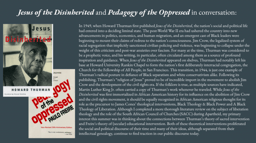Leadership in Action
For my Leadership in Action project I worked alongside one of the lead curators at the Iziko Slave Lodge Museum in Cape Town, South Africa, where, in the span of two months, I mainly assisted with archival research at the National Library of South Africa and the Western Cape Archives and Record Service, searching for the names of the enslaved people on a prominent farm owned by the Van Breda family in the late 1700s and early 1800s, as well as any clues to their lives that may have resided beyond the data and scant recordings of those texts. I also helped to carry out tours and outreach programs, specifically with local youth in the public schools — incredibly important since, for so long, the history of the Indian Ocean slave trade and Apartheid were entirely repressed or misrepresented in schools throughout South Africa. I also re-wrote some of the wall texts to include much of what I and others found in the slave records.
So the work that I contributed to as well as my time in Cape Town were both solitary and incredibly relational. I was working independently but I was also working in conversation and I was also always meeting new people and young people in the Museum — and their experiences were always delightful to witness. I also arrived in Cape Town during a historic national election, so there's another whole conversation to be had about how I was always curiously asking locals about the political situation, in part because I felt that at a certain point reading about the election as an outsider just wasn’t the same as reading into the election as an insider, a South African national citizen, and maybe even, in particular, a black and/or colored South African national citizen.
Throughout this experience, I learned more about the practical elements involved in public humanities work, specifically about dealing with low resourcing and underfunding, but also about the various ways of thinking about curation as an art form, the various ways in which curatorial practice attempts to attend to and even accommodate its audience(s), at all times trying to teach or re-teach without necessarily indoctrinating that audience, at all times trying to engage that audience, to arouse interest in the subject across broad demographics. The impact of my work will be lasting insofar as the wall texts I wrote will likely remain for months and even years to come, as well as my contributions to re-imagining a portion of the exhibit that is in the process of being actualized. As such, this work will be sustained, sustained by the museum and the profound commitment of the people I worked with across those two months. All and all, I appreciate the support of the Laidlaw Scholars Program; it gave me the opportunity to pursue this research and contribute to a much larger and on-going historical project in the public humanities that, in large part, is influenced by the discourses of decolonial and postcolonial studies. I look forward to continuing my studies at Brown and far beyond.


Please sign in
If you are a registered user on Laidlaw Scholars Network, please sign in